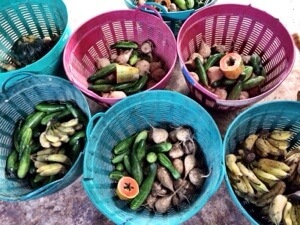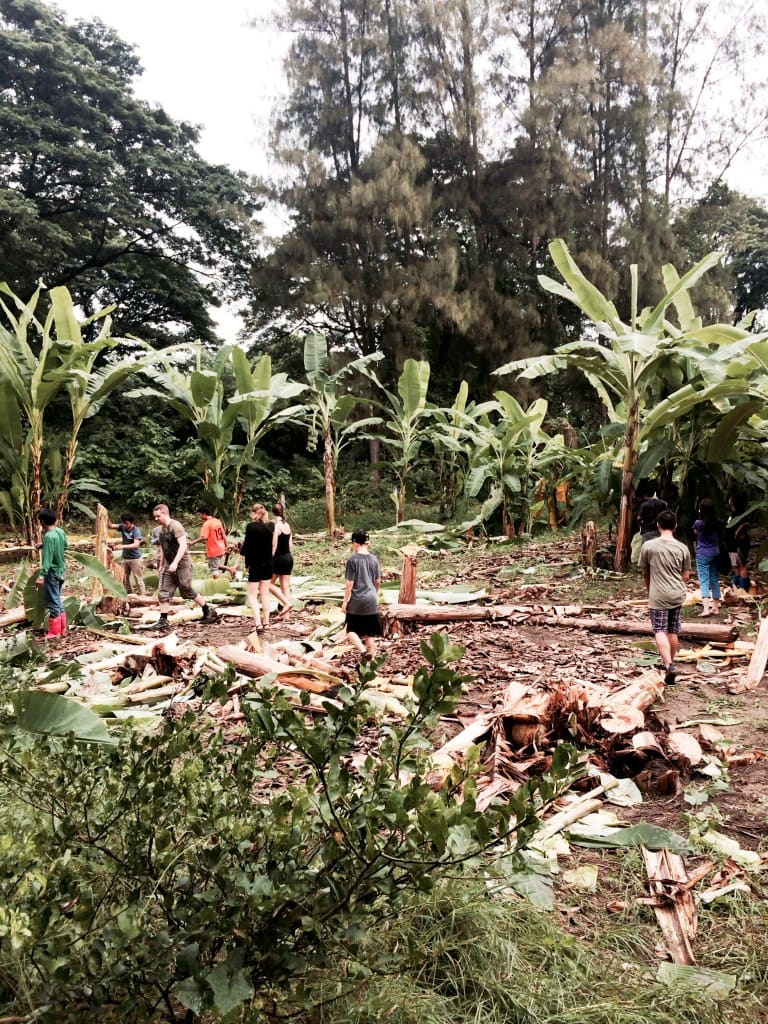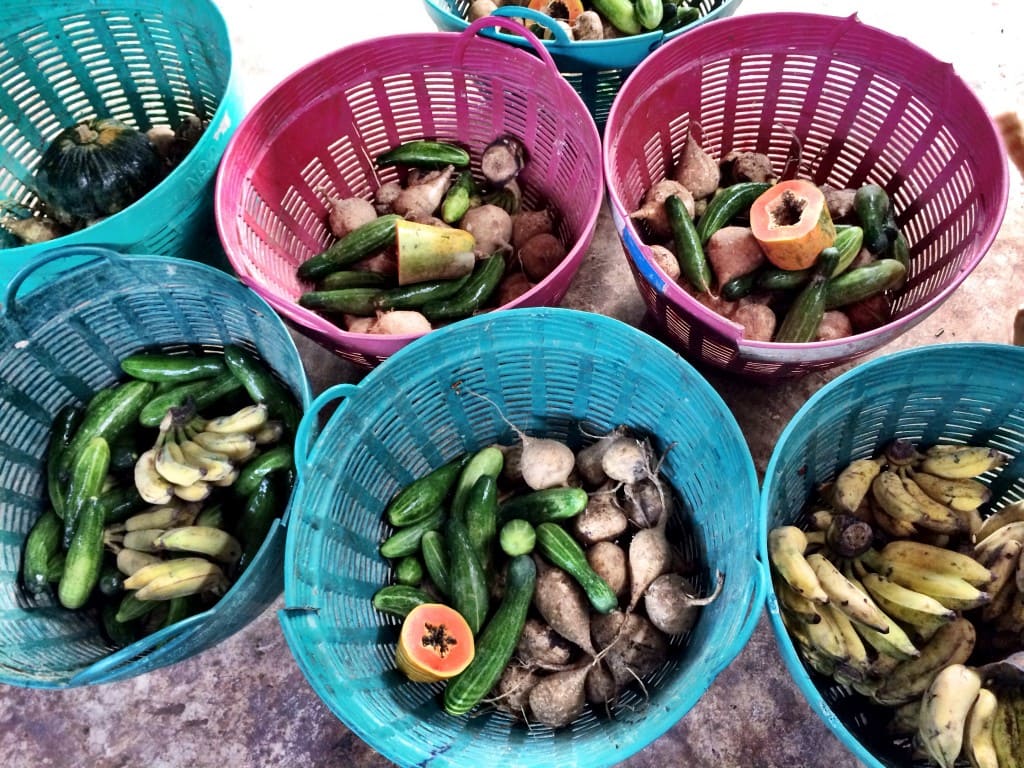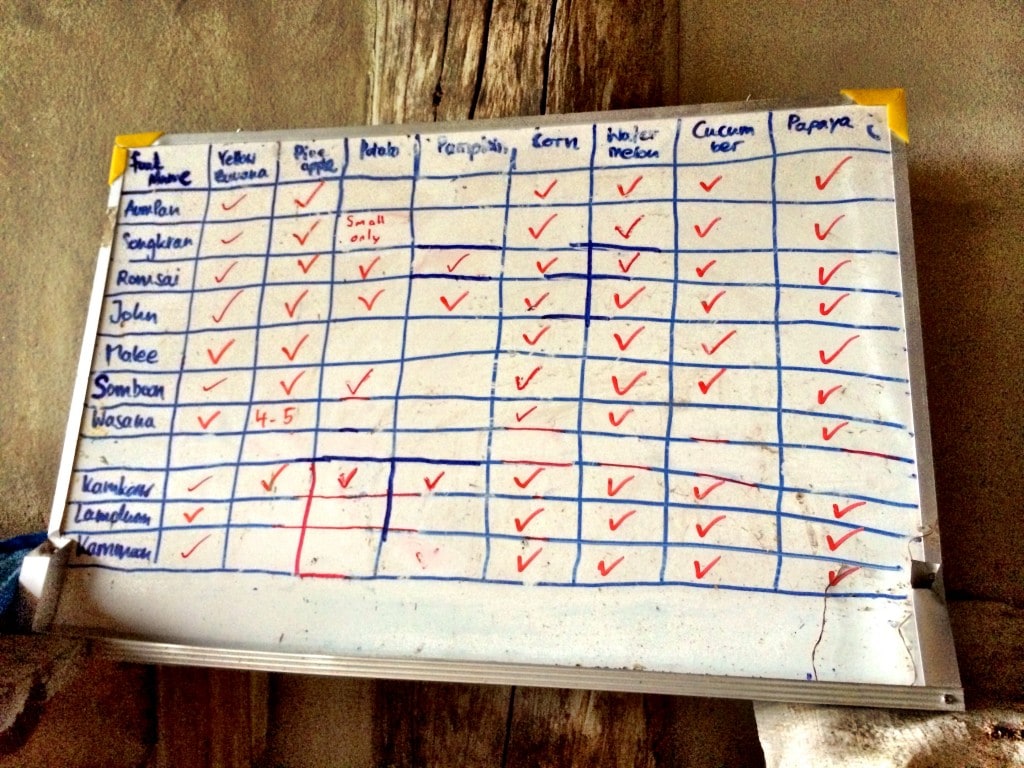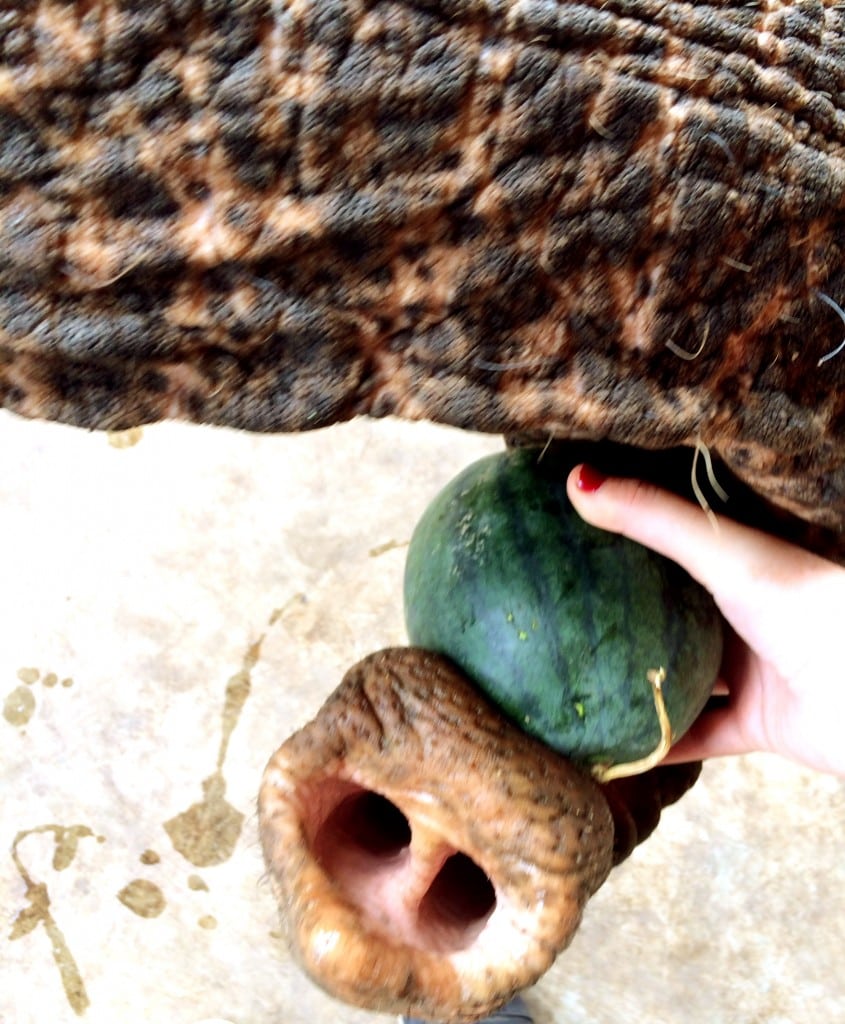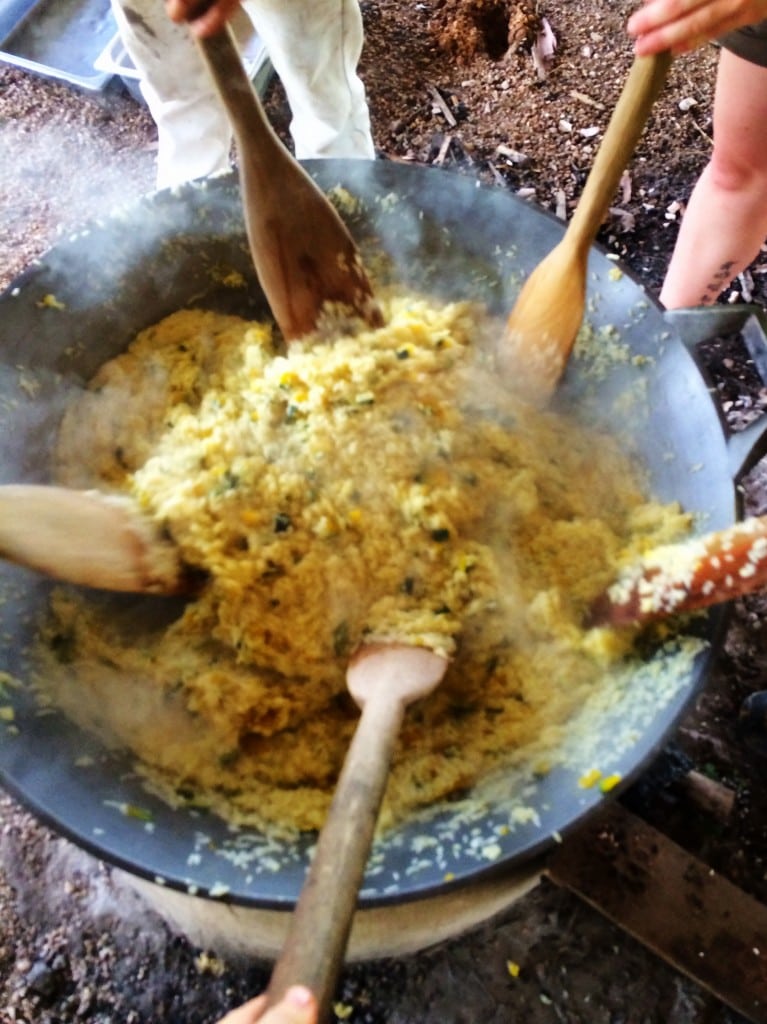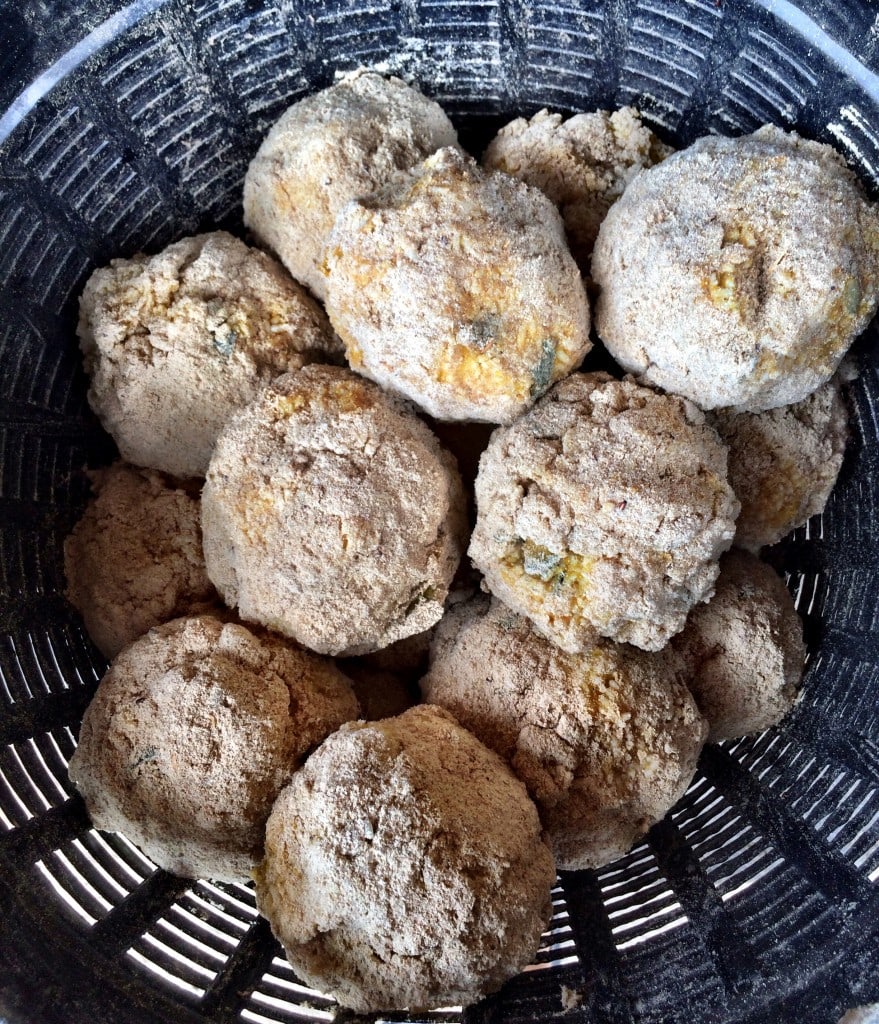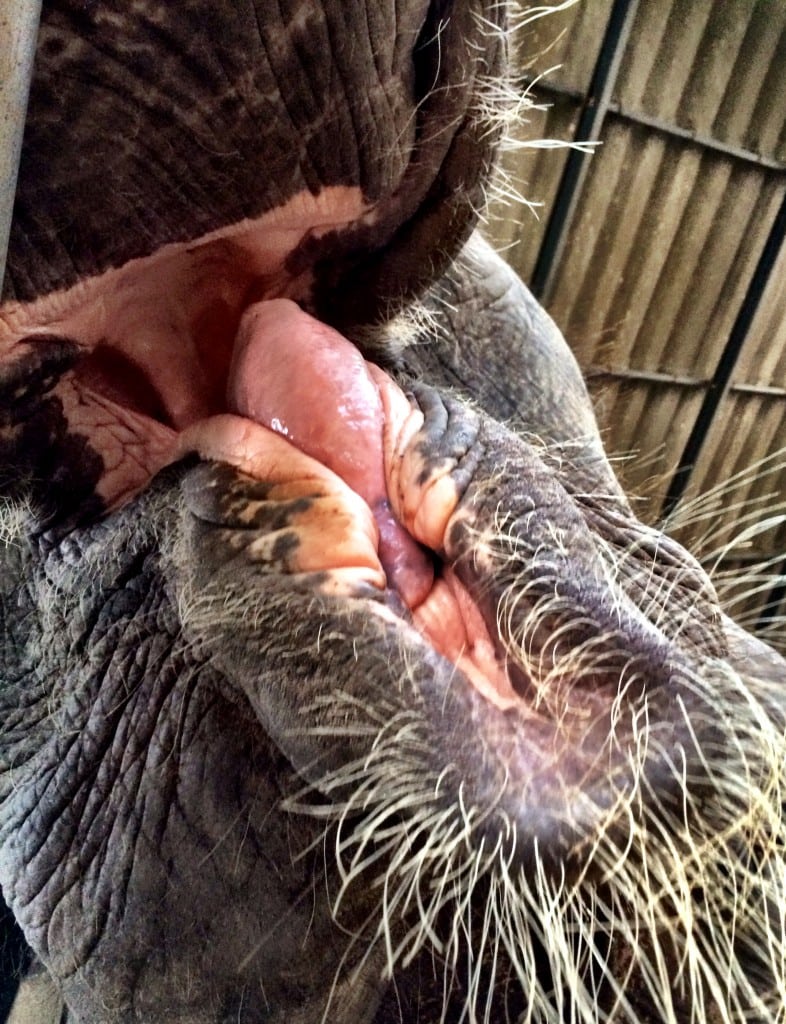Elephants eat 10% of their body weight each day, which means they spend most of their time eating. As a volunteer, our days pretty much revolve around feeding the elephants and it’s pretty much a full time job.
BANANA TREES
Every day, we drive to one of the local farms and load 1000’s of pounds of banana trees into the truck for the elephants to eat. This is my least favorite task at ElephantsWorld.
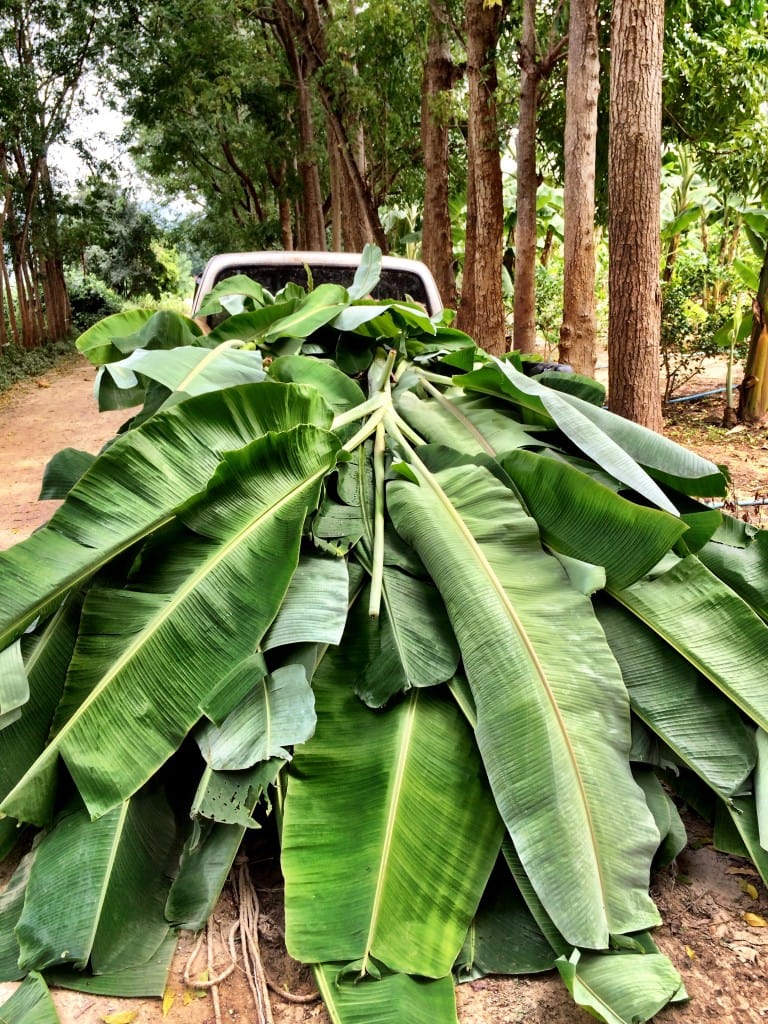
Banana trees only yield fruit once in their lifetime and then they become useless to the farmer. The farmers donate their trees to us, and we come and collect them to feed to the elephants! It’s a great system.
Cutting banana trees is part of the daily tourist program, so we load the visitors into the truck and head to whichever farm we are picking up from that day. Once we arrive, the mahouts walk through the farm chopping down the trees and we collect them and load them into the truck.
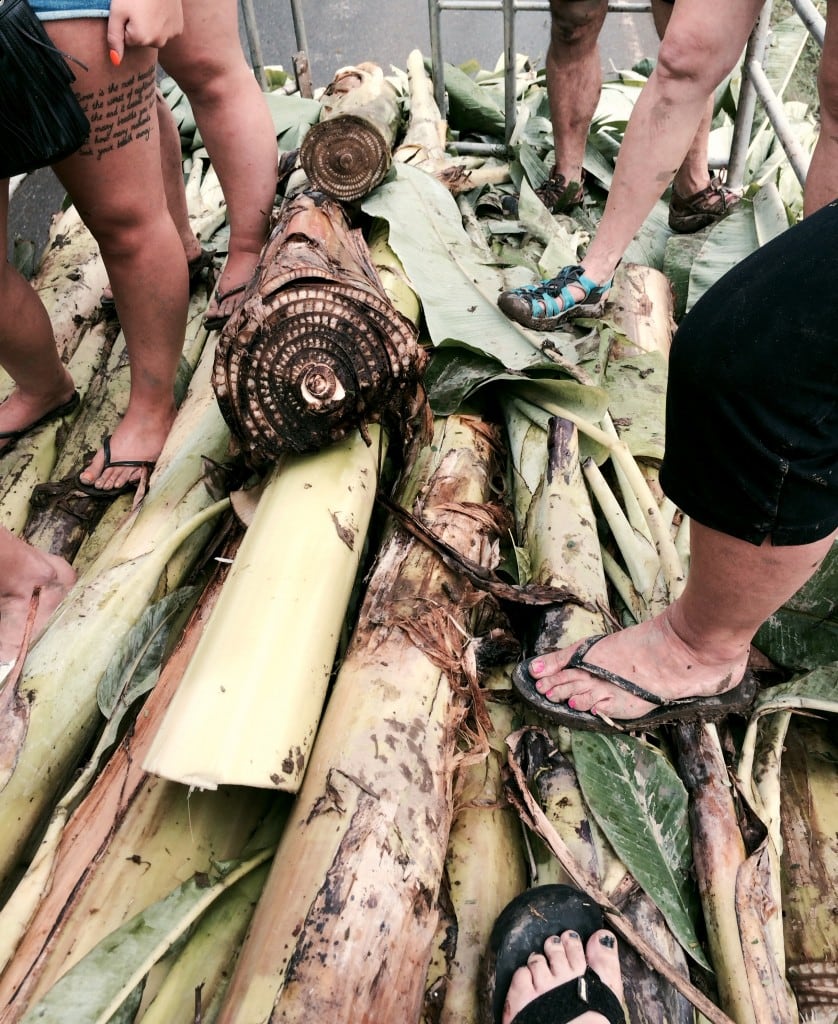
It sounds easy enough but we usually do this during the hottest time of the day; so lugging heavy trees in 90 degree heat and 75% humidity is not usually the most fun thing to do.
Also, the tourists think it’s fun for about 2 minutes and then they’re over it. So the volunteers wind up doing most of the work.
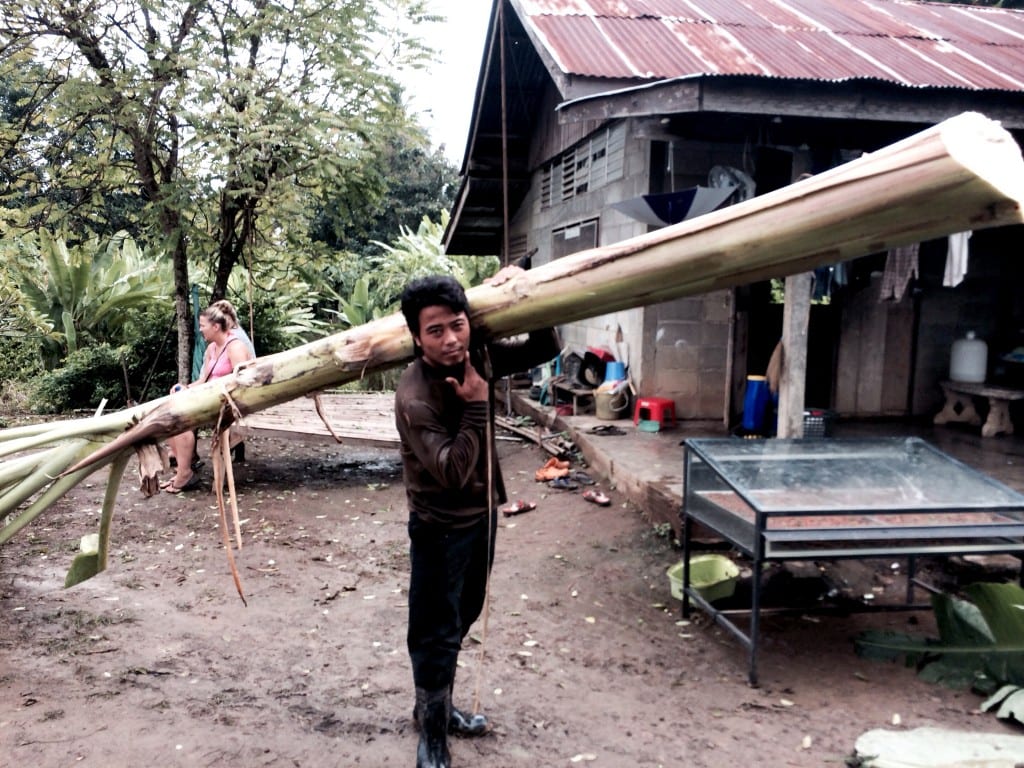
In the end, it’s all worth it when we bring the truckload of banana trees home to our happy elephants! They can hear us coming from a mile away and will power walk over to us as we drive up. This is one of their favorite snacks of the day.
THE FOOD SHOP
Twice a day, we head to the food shop to weigh out fruits and vegetables for the elephants. The food gets divided amongst 10 baskets (one for each elephant) and we usually aim for 16-18 kilos (35-40 pounds) per basket.
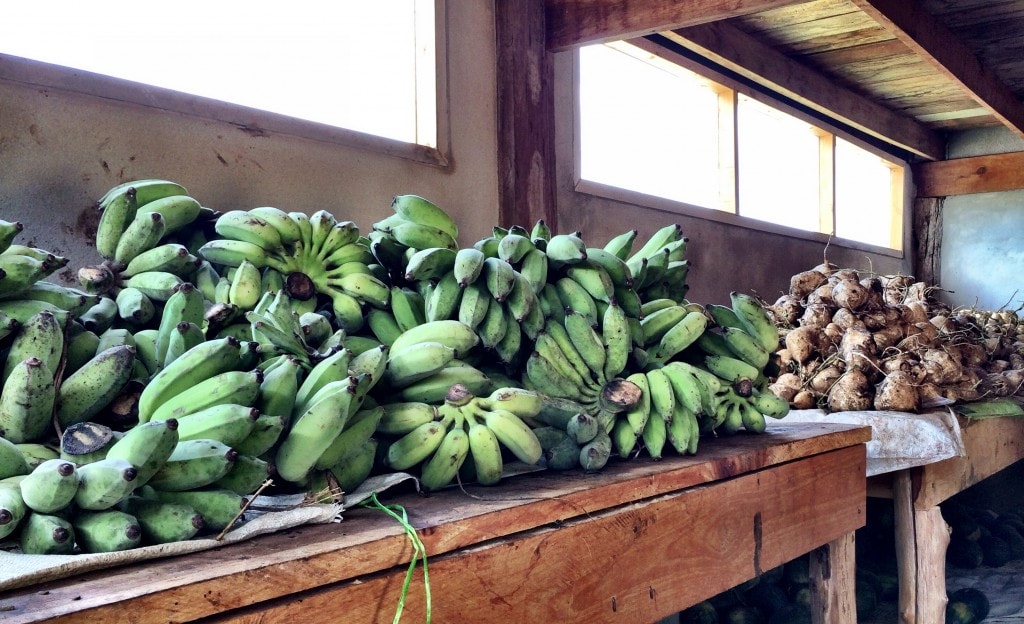
The elephants are all at different stages of life, and some can only chew/digest specific foods. They are also very picky. For this reason, we must follow a chart to tell us who gets what.
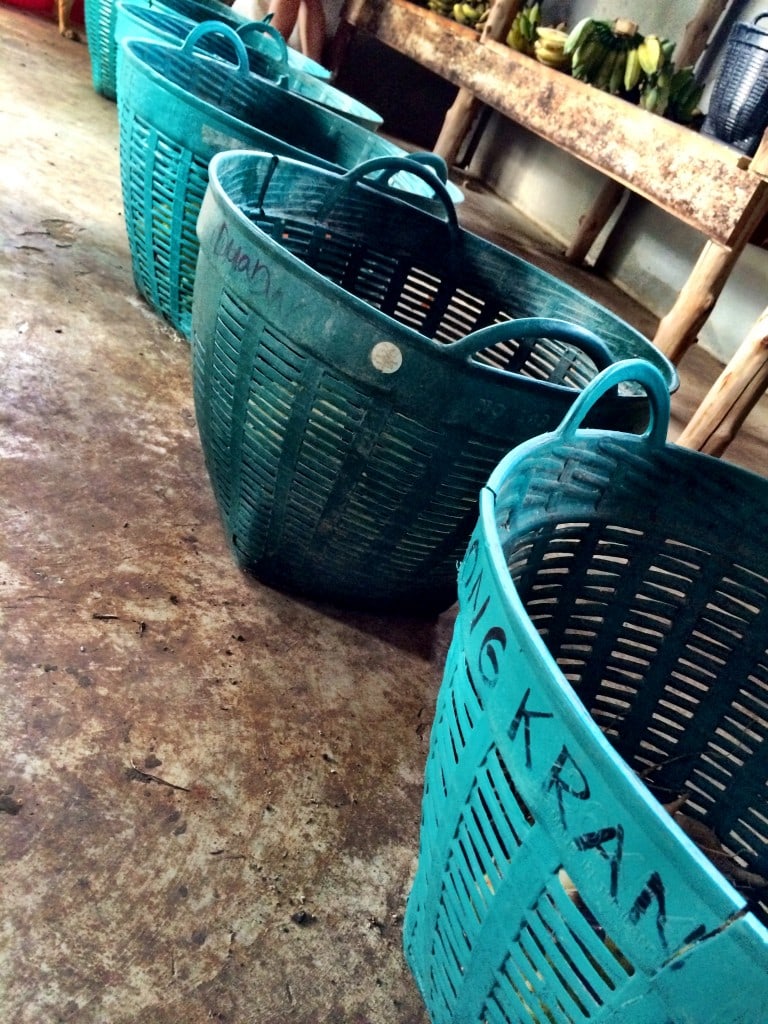
The elephants line up at the same place each day and are fed the contents of their basket (usually by tourists). I like to sneak away and feed Songkran. Visitors don’t always have the patience to sit with her and because she eats very slowly and needs to be hand fed.
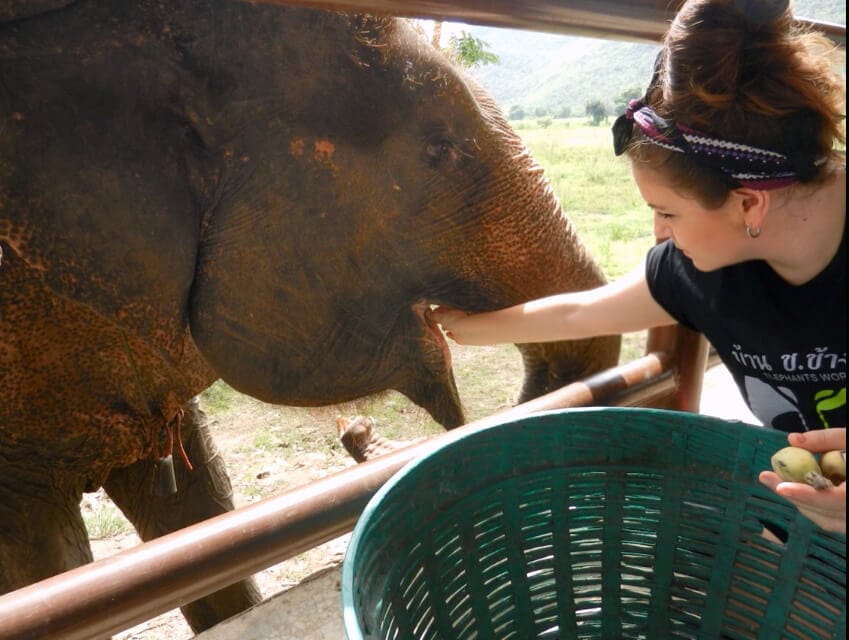
When we do food shop in the morning, Aum Pan sits outside the door, pushing her trunk in the open vents. She loves to eat 🙂
STICKY RICE FOR OLD ELEPHANTS
Elephants lose and regrow their teeth six times throughout their life. At around 65 years old their last set falls out, causing them to lose ability to chew hard food. In the wild, the natural way for many elephants to die is through starvation.
A lot of the elephants at ElephantsWorld are older than 65, with our the oldest at a ripe old age of 77. Since the older elephants have no teeth, we make a special mixture for them so that they can get all their vitamins and nutrients. They are also given softer produce such as cucumbers, bananas and watermelon.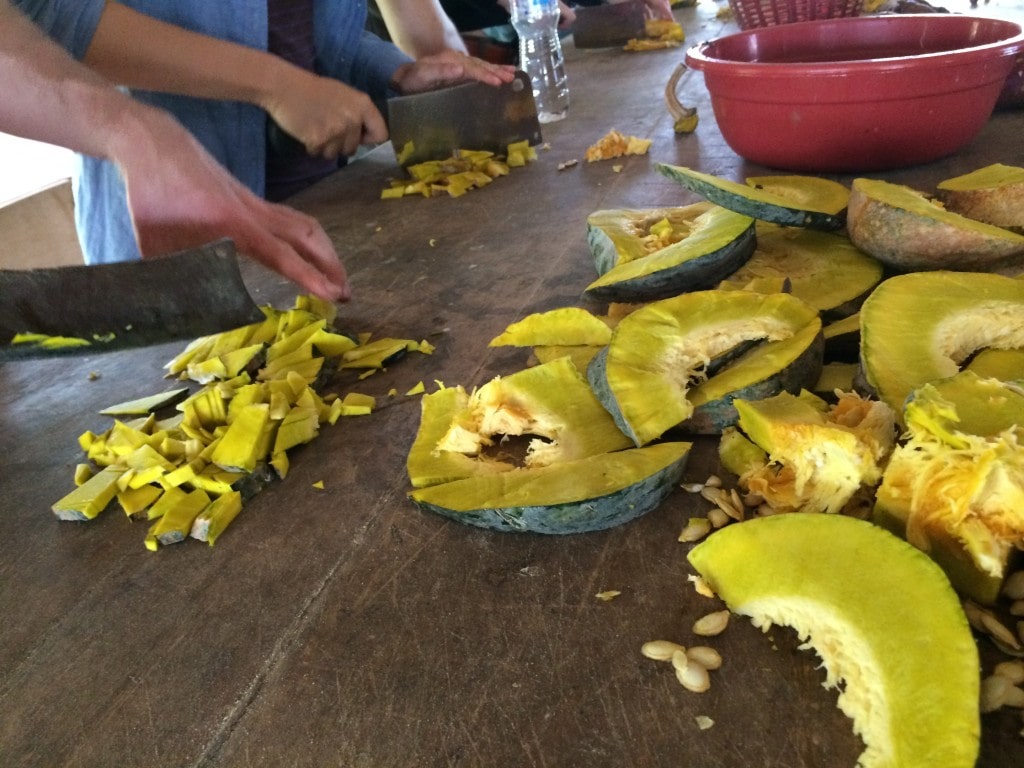
Everyday we chop up pumpkin, boil it and cook it into rice over an open fire. The rice sits for several hours, getting nice and sticky. Once the mix is ready to be prepared, we roll it up into large balls and coat them with a special protein powder.
Elephants are very picky eaters. Someone recently donated a new brand of protein powder to the sanctuary, but they refuse to touch it.
Once the sticky rice balls are formed, we get to feed them to the happy, toothless elephants.

